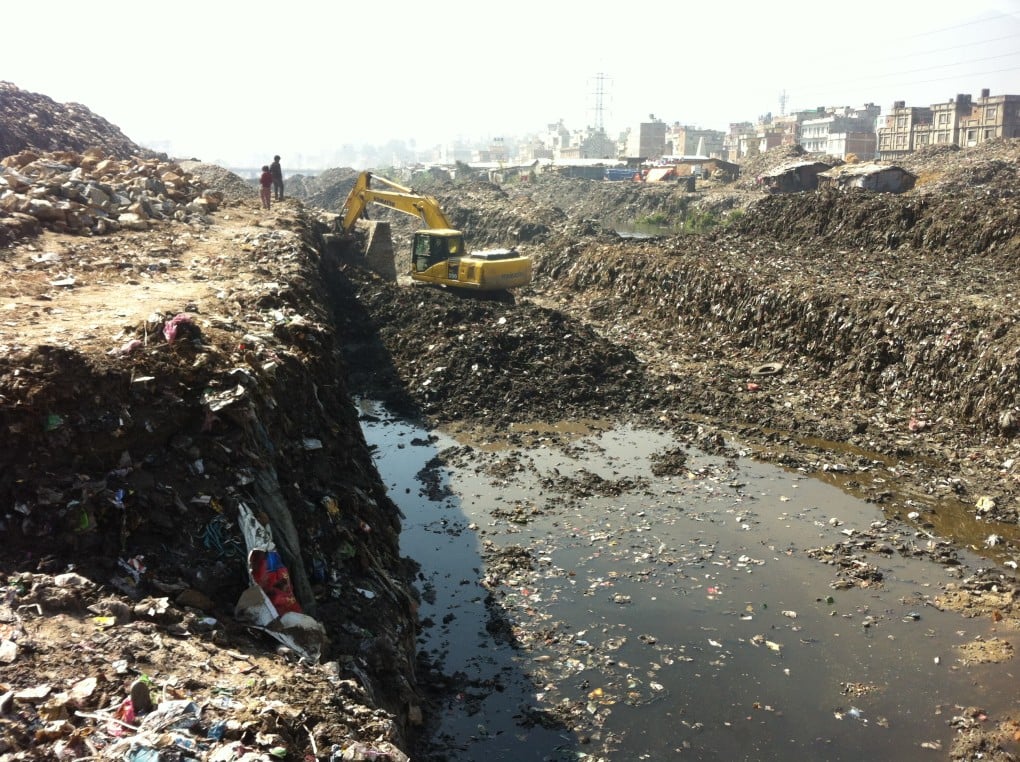Come Saturday and hundreds of people gather at the banks of Kathmandu’s Bagmati river, not for a waterside picnic or a leisurely boat ride but for an intensive clean-up drive, a landmark environmental initiative that has led to the collection of more than 300 tonnes of garbage in the last nine months.
Unmindful of the muck, Nepal’s civil society, including students, bureaucrats, politicians and security personnel, systematically pick up waste from the river that flows through the heart of Nepal’s capital and had been declared ‘dead’ by scientists.
The campaign to rescue the river, known as Nepal’s holy waterway because it flows past the Pashupatinath Temple, one of the most sacred Hindu shrines in the world, began nine months ago and there has been no let-up since.
Unlike similar campaigns, the number of volunteers that flock every Saturday is increasing rapidly. Though there is no registration system, participants estimate that more than 2,000 people gather every week. Other than individuals, more than 30 organisations as well as the security forces and concerned government groups are regular participants.
“This had never happened in the past,” said Mausam Khanal, part of the Nepal River Conservation Trust, an NGO working on river issues.
In fact, the huge numbers were getting to be unmanageable so the clean-up drive has spread to three places instead of being concentrated in just one spot. There is no one organiser and no official committees have been formed, but the volunteers gather nonetheless. There is a method to the seeming chaos – key activists meet every Wednesday to chalk out the plan for Saturday.
Amongst the Saturday regulars is the Nepal government’s chief secretary Leelamani Paudyal.
“I will be in river till it gets new life and this is my firm commitment. I take this as my responsibility,” Paudyal told thethirdpole.net.
The initiative was initially met with scepticism, he recalls, but the success of the campaign has silenced critics.
![A man passing through the pile of waste that was taken out while construction works in Bagmati River at Balkhu area [image by Ramesh Bhushal]](http://thirdpole.n.infoamazonia.org/wp-content/uploads/sites/2/2014/03/A-man-passing-through-the-pile-of-waste-that-was-taken-out-while-construction-works-in-Bagmati-River-at-Balkhu-area-bw-300x224.jpg)
This is his second attempt at cleaning the Bagmati. “The first was when Baburam Bhattarai was prime minister (from 2011-2013). I managed to get him to enter the river to collect the filth from the river bed,” Paudyal said.
Hoping to set an example for others to follow, he said: “It is on my holiday, it is volunteer service. People sometime ask me to introduce policy, I don’t know how much they know about policy formulation processes… making policy does not clean rivers. You have to enter into filth, take risks…”,
Activists say that the chief secretary’s participation has forced other government agencies to be there but the fact is also that the campaign has acquired a momentum of its own, pulling individuals in.
Though there is no scientific data to back it up, the river is visibly cleaner. The water flows clear where there were piles of garbage and heaps of plastic.
“A few months ago, people would cover their noses while passing the river but that’s not the situation now,” said Hari Bhattarai, a student who tries his best to be there every Saturday.

According to activist Megh Ale, infrastructure was only one aspect. The river could be cleaned and sustained only with self-awareness, he said.
With 57 rivers and rivulets as its tributaries, Bagmati originates from Baghdwar, literally tiger’s door, at the northern hills of Shivapuri National Park near the city and crosses the valley at Chobar.
Two years ago, Sadhu Bhai Maharjan—a 70-year-old resident of Kathmandu had wistfully recalled how he and his friends would swim in the river and fish in it. “Now people don’t believe us, but we used to swim in the river flowing nearby a few decades back and enjoyed fishing. The water was used for drinking too,” he had told this reporter.
Maharjan passed away a few months ago, his dream to see the Bagmati flowing pristine again not quite fulfilled. It’s a dream that many others in Kathmandu share. But the beginnings have been made. And full revival could be close.

